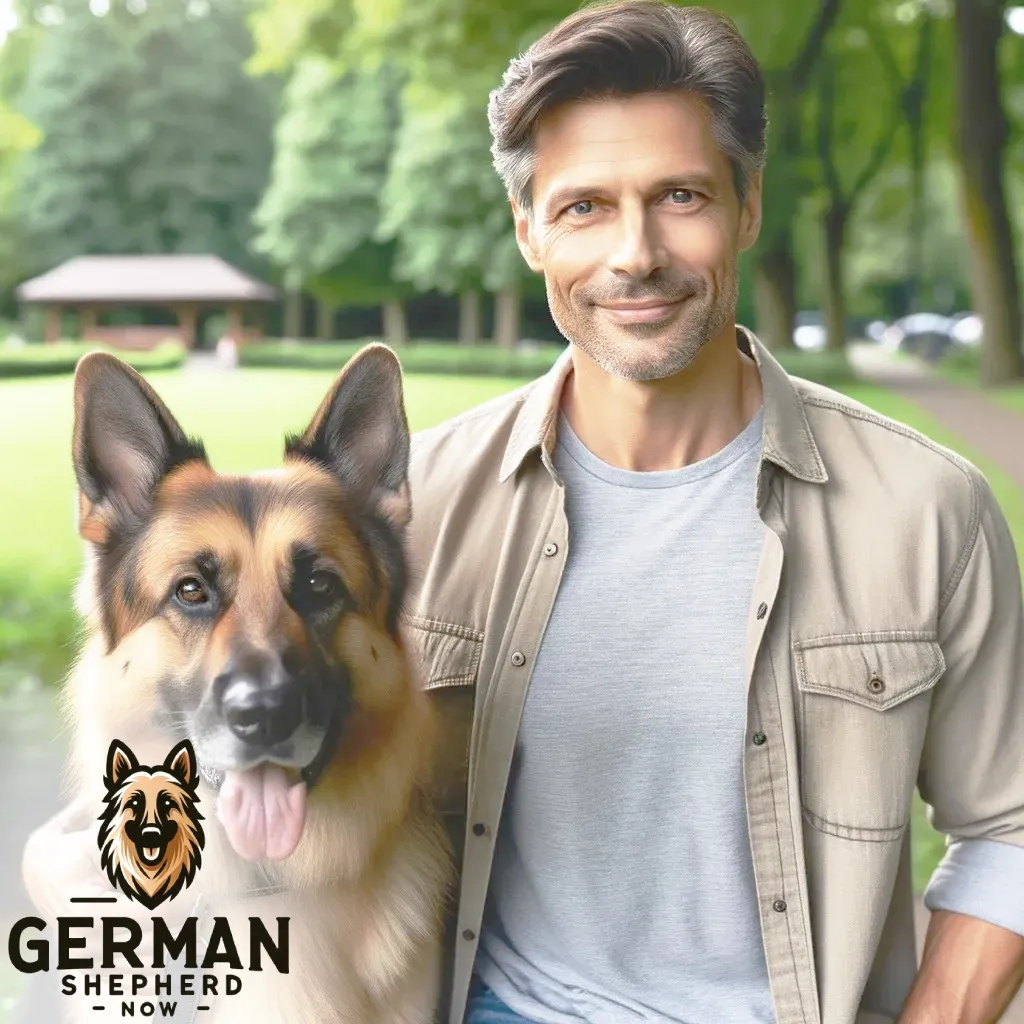How to Make German Shepherd Back Legs Stronger

To strengthen a German Shepherd’s back legs, exercise regularly, like swimming or walking on various terrains, and ensure a balanced diet rich in nutrients that support joint and muscle health.
Maintaining an ideal weight for your dog and consulting with a veterinarian for specific exercise regimens and dietary adjustments is crucial.
Strengthening the Back Legs of German Shepherds
German Shepherds are known for their strength and agility, but sometimes their back legs can weaken.
Ensuring the strength and health of their back legs is crucial for their overall well-being.
Here are some well-explained facts on how to make a German Shepherd’s back legs stronger:
1. Regular Exercise
Engaging in regular exercise is vital. Activities like walking, especially on different terrains, can help strengthen the muscles in their back legs. Controlled running and fetching games can also be beneficial. Avoiding overly strenuous activities that could strain their legs is essential.
2. Swimming
Swimming is an excellent, low-impact exercise that strengthens muscles without putting too much strain on the joints. It’s particularly beneficial for German Shepherds as it supports their weight and allows them to move their legs freely in the water.
3. Balanced Diet
A balanced diet is vital. Ensure your dog gets enough nutrients, particularly those that support joint and muscle health. Supplements like glucosamine and chondroitin can be helpful, but it’s best to consult a veterinarian before adding any supplements to your dog’s diet.
4. Weight Management
Maintaining an ideal weight is crucial. Excess weight can strain their back legs, leading to weakness or joint problems. A healthy diet and regular exercise can help manage their weight effectively.
5. Specific Exercises
Certain exercises can specifically target the back legs. This includes walking up and down hills or stairs, which helps strengthen the hindquarters. Constantly monitor your dog to ensure they are not experiencing discomfort during these exercises.
6. Regular Check-ups
Regular check-ups with a veterinarian are essential. They can identify any underlying health issues contributing to weakness in the back legs and provide tailored advice based on your dog’s specific health needs.
Exercise for Strengthening a German Shepherd’s Back Legs
Having a German Shepherd means understanding their need for regular exercise to stay healthy and strong. One important area to focus on is their back legs, which are crucial for overall mobility and agility.
A well-planned exercise routine can help keep these muscles robust and prevent future health issues.
Stair Climbing: A simple yet effective exercise is stair climbing. This exercise naturally strengthens the back legs by using the muscles required for climbing up and down. Here’s how to do it:
- Find a Safe Set of Stairs: Ensure the stairs are not too steep and have a non-slip surface to prevent injuries.
- Start Slowly: Begin with a few repetitions, gradually increasing as your dog becomes more comfortable and robust.
- Use Treats for Motivation: Encourage your German Shepherd to climb using treats. Place them on each step initially, then at the top of the stairs as they improve.
- Monitor Their Comfort: Watch for any signs of discomfort or tiredness, and stop immediately if they seem in pain or tired.
- Consistency is Key: Regular practice will help in building strength. Aim for a few sessions each week.
This exercise strengthens the back legs and improves overall stamina and cardiovascular health. However, it’s essential to consult with a vet before starting any new exercise regimen, especially if your dog has existing health issues.
Why Do German Shepherds Have Back Leg Problems?
German Shepherds are known for their loyalty and intelligence, but they also face a common health issue: back leg problems. Understanding why these problems occur can help owners care for their pets better.
Genetic Factors
One of the main reasons German Shepherds struggle with back leg issues is genetics. This breed is prone to hip and elbow dysplasia. These are conditions where the joints don’t form properly, causing pain and mobility issues.
Large Size and Build
German Shepherds are large dogs. Their size and weight put extra pressure on their back legs. Over time, this can lead to joint wear and tear, especially if they are overweight.
Active Lifestyle
These dogs are very active. While exercise is good, too much can strain their legs. They need to have a balance of activity and rest.
Aging
As German Shepherds age, they are more likely to face leg problems. Age brings arthritis and muscle weakness. This makes it harder for them to move as they once did.
Diet and Nutrition
Diet plays a significant role in joint health. If a German Shepherd doesn’t get the proper nutrients, bone and joint health can suffer. A balanced diet is vital to keeping their legs strong.
Why German Shepherds Need Strong Back Legs
German Shepherds are known for their agility, strength, and versatility. These attributes make them excellent working dogs in various fields.
One vital aspect of their health and functionality is the strength of their back legs. Let’s explore why this is so important.
Enhancing Mobility and Agility
German Shepherds are active dogs that love to run, jump, and play. Back solid legs are crucial for these activities, ensuring they can move swiftly and gracefully. This agility is essential for those serving as police or rescue dogs.
Preventing Health Issues
Weak back legs can lead to health problems like hip dysplasia, a common issue in German Shepherds. This condition can cause pain and mobility issues. Strong legs help in reducing the risk of such joint problems.
Better Weight Distribution
Solid legs help maintain a balanced weight distribution. This balance is essential for the dog’s overall posture and spinal health, preventing back problems.
Improved Stamina and Endurance
For working German Shepherds, stamina is vital. More muscular legs mean they can work or play longer without getting tired quickly. This endurance is beneficial for their work and overall well-being.
A Closing Note
A German Shepherd’s back leg strength is crucial for their overall health and well-being. Owners can significantly bolster their dog’s leg strength by combining regular exercise, like swimming and stair climbing, with a balanced diet and proper weight management.
It’s important to recognize each dog’s unique needs and regularly consult a veterinarian to customize their care.
Focusing on their back leg strength improves mobility and agility and helps prevent common health issues, leading to a happier, healthier life for your furry friend.

I’m Martin, and I grew up in the super cool city of Seattle. You know, the place with all the incredible mountains and forests? Yeah, that’s my playground!
Ever since I was little, I’ve been all about nature. I used to wander around the woods with a notebook, doodling all the cool plants and animals I’d find.
